Over the weekend, while attempting to get into the holiday spirit by setting up my table-top fiber-optic Christmas tree, baking cookies, and watching the snow fall in sub-zero temperatures, I discovered that one of my favorite Spanish artists, Salvador Dalí, designed 19 unique Christmas cards between 1958-1976 for the Barcelona-based company Hoechst Ibérica. While I knew that Dalí had created artwork for advertisements (Bryan’s Hosiery) and magazine covers during the mid-20th century, I had never seen his unique portrayals of Christmas. So like any good academic on winter break, I put off my Spring syllabus-planning to do some frivolous investigating.
One of the earliest Dalinian images used for commercializing the holiday season was actually a sketch for a cover of Vogue magazine in 1946. This image (below) exhibits tell-tale characteristics of Dalí’s surrealist style, including the barren, expansive landscape and the incorporation of double-images (which also characterize his depiction of the Spanish Civil War). In this particular piece, the architectural elements supporting the symmetrical Christmas trees exhibit feminine facial features, a tactic that adds a fitting flare to the cover of a fashion magazine. This more popular image is still re-printed and available as a specialty Christmas card today.
This early 1948 rendition of a “Christmas” landscape, however, is but one of Dalí’s efforts to illustrate the holiday season. In 1958 he created the first of his eventual 19 greeting cards for Hoeschts, and the publishing company would annually send these artsy holiday cards to doctors and pharmacists throughout Spain. Importantly, Dalí’s renditions did not incorporate traditional Mediterranean, Catholic Christmas imagery such as the Nativity scene or the Reyes magos (Wise men), but rather they appropriated more American and Central European elements, such as the Christmas Tree. The “árbol santo” is in fact a constant element in these 19 illustrations, and Dalí occasionally converted the Christmas Tree into an allegorical depiction of the years events or infused it with distinctive elements of Spanish culture. Below is the first card in the series:
In 1960 and 1961, the Christmas Tree is at once unconventional and also decidedly Spanish. Both of these cards invoke classic masterpieces of Spanish art and literature. In 1960, the trunk and upper branches of the Christmas tree form the outline of Cervantes’ famous caballero andante, Don Quijote de la Mancha (as Dalí imagined him)…
… and in 1961 Dalí pays homage to Diego Velázquez’s 1656 masterpiece, Las meninas:
The majority of Dalí’s cards contain a short, hand-written greeting or description penned by the surrealist painter himself (though these are difficult to find online). On the 1962 card below, for example, Dalí celebrates space exploration and scientific advances by labeling his portrayal “el primer Christmas astronáutico“. The holiday, it seems, was not the main focus of this year’s card, and the tree is barely visible at first glance.
While Dalí’s holiday artwork may have found an audience in Spain, his designs were met with much less enthusiasm in the United States. Despite the relative success of his Vogue covers and hosiery advertisements in the 1940s, Dalí could not entirely win over America’s largest greeting card company, Hallmark, or the 1950s public who supported it. By the early 1950s, Hallmark had become such a culturally relevant force in the US that it was an attractive creative partner for many high-profile artists, even actors (See Patrick Regan’s Hallmark: A Century of Caring). Norman Rockwell was (is) undoubtedly among the most well-known of mid-century American artists, and the iconic illustrator created 32 traditional Christmas designs for Hallmark between 1948 and 1957. Even today, many of his designs are widely recognized and still reproduced, as they represent a classic portrayal of Christmas as a jolly, magical, and quintessentially “American” holiday.
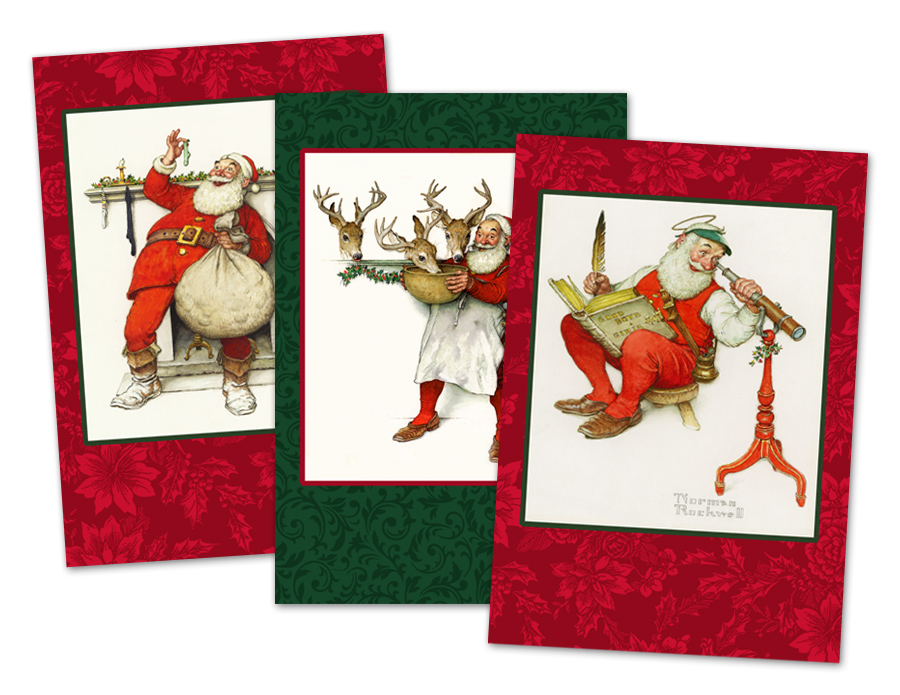
Rockwell’s recognizable Christmas illustrations still appear on greeting cards today, over 60 years after their debut.
But Salvador Dalí also lent his talents to Hallmark in 1958. Yet unlike Rockwell’s wholesome, familiar americana illustrations, Dalí’s “surrealist take on Christmas proved a bit too avant garde for the average greeting card buyer” (Regan 97). You can read a short newspaper article about “The Dali Christmas Story” and Hallmark’s tepid reaction in a 1981 issue of the St. Petersburg Evening Independent. Below, for example, is Dalí’s depiction of the Nativity scene, created specifically for Hallmark:
While I can’t say that the rejection of Dalí’s surrealist, abstract take on Christmas in 1950s America is entirely surprising, I am disappointed that I haven’t seen these images before. They seem to be part of special exhibitions, appearing in Barcelona’s CaixaForum in 2006, and in Dalí’s Teatro-Museo in Figueres in 2008, but I’m not sure where they are displayed or housed today. I spent a considerable amount of time lost in the depths of the internet trying to amass a collection of these designs, and below are some of my favorites (well, pretty much the only images I could find via a few hours with GoogleImages…).
Enjoy!
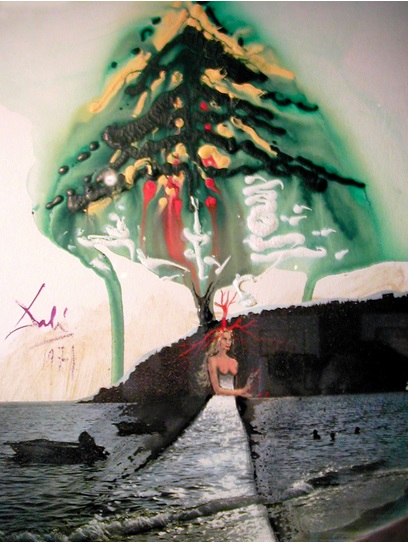
Felicitación de Navidad, Dali, 1971 (high quality image at Flickr, http://www.flickriver.com/photos/dou_ble_you/230261710/#large)

Navidad, Dali, 1970 – Text: I can make out the English phrase “Flower Power” in quotation marks, and I believe the first words are “Las campanas,” or “The bells.” Anyone with better eyes want to help?
If it weren’t for digital cameras, photo editing software, and one-hour made-to-order holiday photo cards allowing us to brag about our own lives and accomplishments in the name of reconnecting with friends and relatives, perhaps we might exchange more artistic renditions of the Holiday Season today. When exactly did the holiday “greeting card tradition” transform into the creation of “personal photo montages”?
What Christmas/Holiday/New Year’s designs or artwork are your personal favorites? And what popular artists or actors would make intriguing Holiday Card Designers today? (actually, that’s a scary thought!)
Resources:
Dali: The Paintings: This excellent book on Dalí by Robert Descharnes and Gilles Néret contains ALL of the artist’s paintings – It’s my favorite volume, and I”ve linked to it in all my posts on Salvador Dalí.
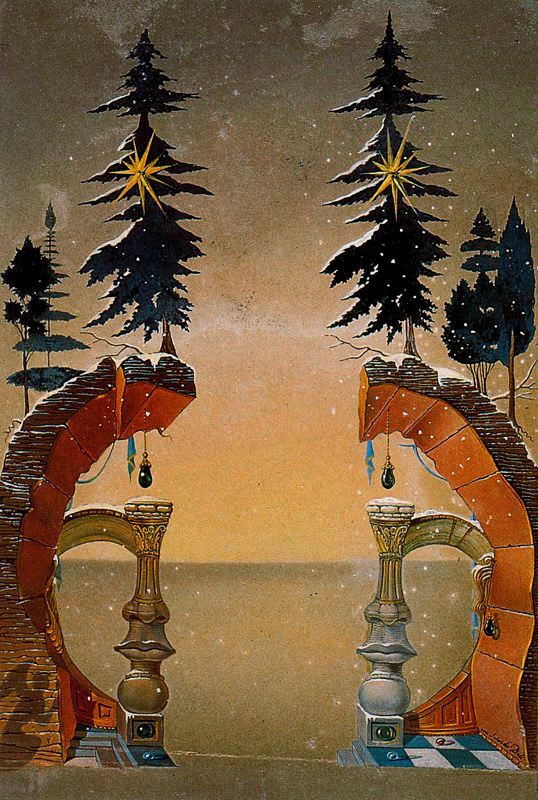
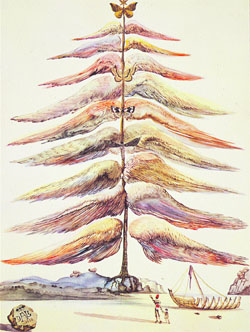
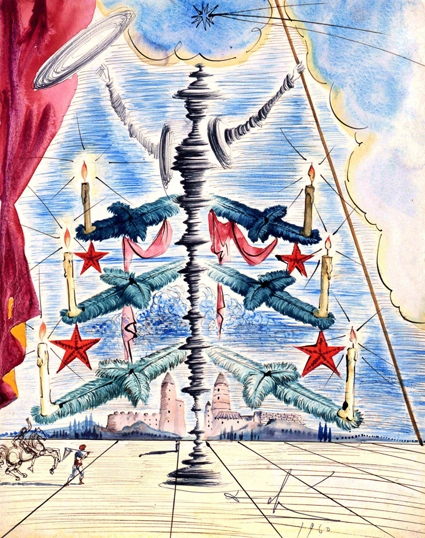

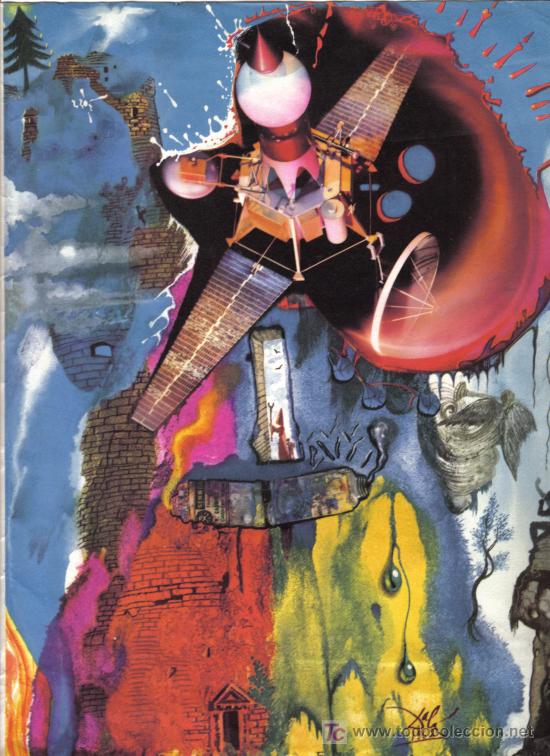
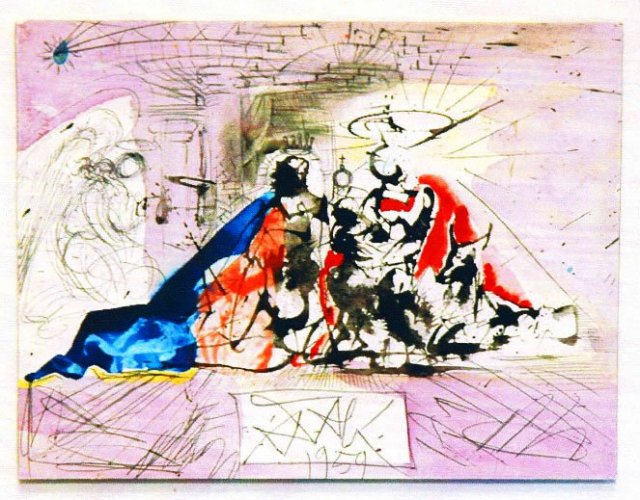
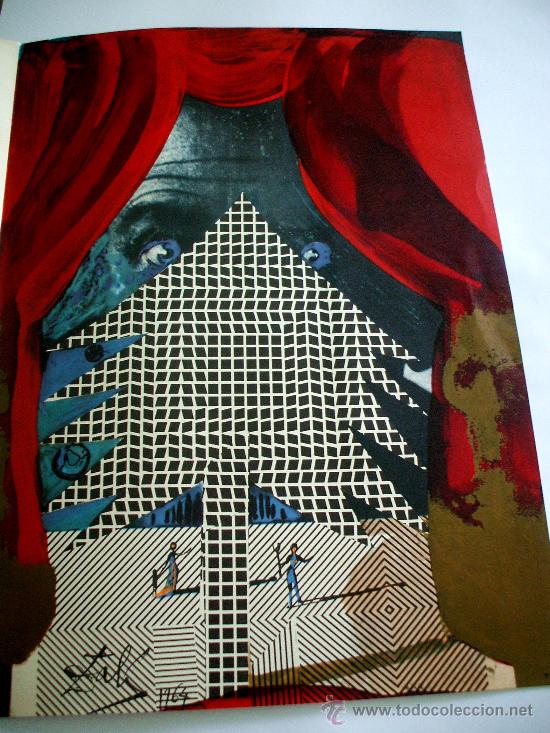
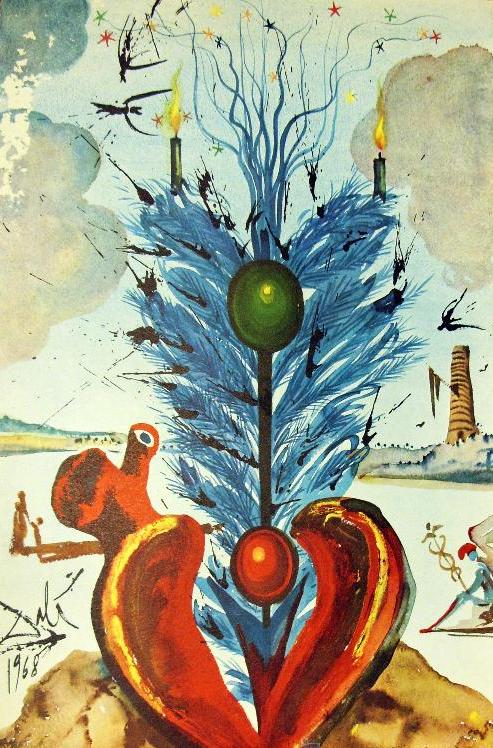
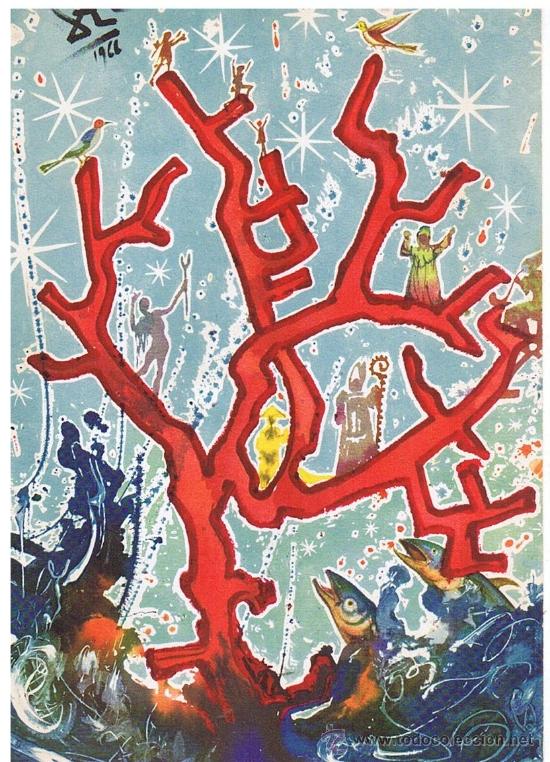
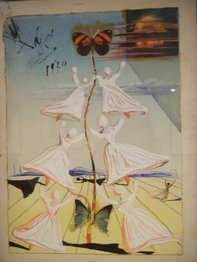
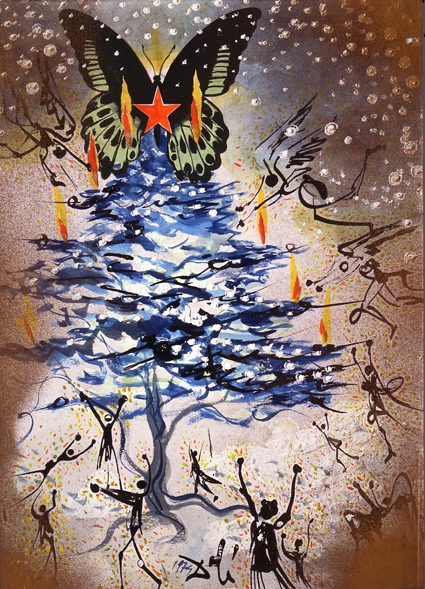







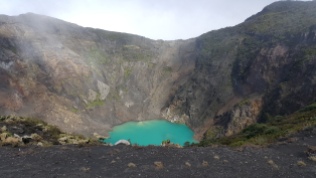






I think the text reads:
Las campanas de AZUCAR, frente a las fuerzas del mal, repiquetan la gloria del “flower power” de los ¿campamentos/camposantos? navideños.
I really can’t tell what the second-to-last word says, and it seems to have an accent, which neither of my suggestions do.
Thanks so much for your input, I was having a tough time trying to make out the words (I may need glasses soon after all! ha!) and, honestly, I didn’t have time to try and decipher them. Another reader found this english translation, which might help…. some of the translation appears a bit odd to me, but the english word used for that final word-in-question is “bluebells”: “The bells of sugar, compared to / / forces of evil rattle the litany of / / ‘flower power’ of bluebells Christmas / / Salvador Dali, 1970”
Looks like Campánulas – Bellflowers
Love the cards, by the way. Thanks for posting them!
Reblogged this on An Elegant Mystery and commented:
Dedicated to Kelsey Lynore at the Tarotnook – Kelsey uses the Dali deck for her readings – ENJOY! (H/T Dangerous Minds at dangerousminds.net)
Thanks for sharing; glad you enjoyed the post
Pingback: The Spirit of Christmas | The Haunted Shoreline
I come up with a little bit different translation of that card (and I admit I’m guess about some of this because Dali’s informal punctuation. The big mystery here is “sugar bells.” Literal? A nickname? Slang?
“Sugar bells, facing the forces of evil, rattle the litany of ‘flower power’ with Christmas bellflowers.” Salvador Dali, 1970″
Thanks for your input – I appreciate the Spanish and English versions that my readers have been sharing with me. And I agree – the odd phrase “sugar bells” and the entire um, “poetic” paragraph is something I’d like to look into further. Thanks for reading 🙂
Hola Rebecca,
Los resultados de tu búsqueda son fantásticos. Estos trabajos de Dalí tan poco conocidos son de una sorprendente vitalidad y su texto manuscrito tan surrealista como sus ilustraciones:
“Las campanas de azucar, frente a las fuerzas del mal repiquetean la letanía del “flower power” de las campánulas navideñas”. ¡Nada para la historia de la literatura! pero una muestra de sus ocurrencias.
Me fascinan esos dibujos
¡FELIZ NAVIDAD!
RAMÓN
mil gracias, ramon! y agradezco mucho su traduccion; mis ojos ‘americanos’ no pudieron percibir muy bien ni la letra de dali ni esas palabras menos comunes. feliz añn nuevo! 🙂
Reblogged this on a fiend of awesome and commented:
Have a truly surrealistic holiday season!
Thanks, Jackie! (Somehow I am just seeing this now). I’m glad you enjoyed the post; thanks for sharing. I’ll be checking out your site this weekend
Pingback: Por mis alrededores (II) | en son de luz
Pingback: The Dalí Triangle: A Surrealist’s Take on the Catalonian Landscape | Rebecca M. Bender, PhD
Pingback: The Morphing Body: Salvador Dalí’s Skulls and the Female Form | Rebecca M. Bender, PhD
Pingback: Salvador Dalí’s Avant-Garde Christmas Cards - Sot Pluk Sot Pluk
Pingback: Salvador Dalí’s Avant-Garde Christmas Cards | Golden Gate Daily
Reblogged this on mirkosol's Blog.
Pingback: Auguri d’autore. | quasi.
Pingback: A Dali Christmas to all
Dali was not a Spaniard, He was a Catalonian, and this is probably in the Catalan language, which is somewhat different than Castillian Spanish. Catalan is one of two official languages in Spain, and was part of Ferdinand (of Ferdinand and Isabella) Trastamera’s empire, which also included the Crown of Aragon (his daughter was Catherine of Aragon),the Kingdom of the Two Sicilies, which included Sicily, Sardinia, part of Corsica, and Naples and all of Italy south of that, about 40% of modern Italy, as well as the Baleric Islands, the Canary islands, some city states in north Africa that Spain still maintains, and some other places. Catalonia was a separate kingdom for over 1000 years, and maintains it’s own large and growing separatist movement.
Do you possess all those cards? Or do you know where I can get those? It would be very kind of you if you let me know the information. Thank you!
Pingback: Women and the Avant-garde: Maruja Mallo’s “Verbenas” (Carnivals) | Rebecca M. Bender, PhD
Pingback: Food, Art, and Eroticism? Gala’s Meals in Salvador Dalí’s Cookbook | Rebecca M. Bender, PhD
Pingback: Christmas Surrealism – a selection of festive surrealist art – The Surrealist Junkie
Pingback: Buon Natale con Dalì
Pingback: Holiday Reading Recommendations, Part II. – JHIBlog
thats looks very Nice and thanks for sharing
Pingback: When Salvador Dalí Created Christmas Cards That Were Too Avant Garde for Hallmark (1960) – worldfree4u
Pingback: 7 Quick Takes | Charlotte was Both
Pingback: When Salvador Dalí Created Christmas Cards That Were Too Avant Garde for Hallmark (1960) - Charm Wish PR
I believe the original Dali paintings are owned by Hallmark. Some of them are on display at the Hallmark Visitors Center in Kansas City, Missouri, USA.
Pingback: Il calendario dell'avvento dell'arte contemporanea – DIARIO DELL'ARTE
Pingback: 7 Πίνακες με τα Πιο Όμορφα και Ιδιαίτερα Χριστουγεννιάτικα Δέντρα - Στο δρόμο της Ποίησης